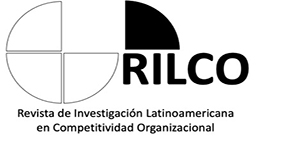
Revista de Investigación Latinoamericana en Competitividad Organizacional / ISSN 2659-5494
LA TECNOLOGÍA Y SU REPERCUSIÓN EN LOS TIPOS DE TURISTAS EN MÉXICO
Autores e infomación del artículo
Luisa Fernanda Sánchez Pérez
Mariam Jiménez Manzo
Edel Cruz García
Universidad Autónoma del Estado de México
edellcruz@gmail.com
RESUMEN
Dentro del turismo en México, el uso de las redes sociales y las nuevas tecnologías, han modificado la forma en que los turistas gestionan su viaje y sus experiencias durante su travesía. Con ayuda del denominado turismo virtual que consiste en utilizar herramientas de realidad virtual para reproducir el ambiente de los lugares, se convierte en una estrategia para conocer y experimentar los destinos antes de viajar.
De acuerdo a lo anterior este modo de publicidad no reemplaza la experiencia de viajar, sólo es una forma, de brindarle al turista un conocimiento previo del sitio que desea visitar. Característica poco positiva del turismo actual es que la gente viaja con la idea de buscar paisajes atractivos o exóticos para compartirlos por las redes sociales, situación que puede hacer de su visita una experiencia trivial porque dejan de lado el conocimiento real del lugar. Para ello se va a efectuar una aproximación en investigaciones existentes sobre este tema a través de una revisión de artículos.
En general, la idea de los artículos abarca cuatro ejes: Tecnología, Innovación, Accesibilidad y Sostenibilidad. En el primer eje se hablará sobre la importancia de la tecnología en el turismo y de cómo ha influido - e influye - en la manera en se viaja. En el segundo eje se destacará el desarrollo que ha tenido la innovación en los negocios turísticos, incluyendo nuevas ideas, productos y servicios. En el tercer eje habla sobre turismo accesible como una de las prácticas turísticas que se desprende de Turismo para todos, y en el cuarto eje se enfocara con el objetivo de que mejore el comportamiento del consumidor del sector turístico y se impulse con más ahínco un turismo verde por parte de los proveedores de servicios.
Por lo tanto, bajo estos ejes, los destinos podrán adaptarse al nuevo perfil de viajero hiper conectado y acompañarlo en el ciclo del viaje. Y de igual manera conocer sus impactos.
PALABRAS CLAVE
Tecnología, Innovación, Accesibilidad, Sostenibilidad, turismo, redes sociales, estrategias, oferta, demanda, repercusión, viajar, atracción, recursos, jóvenes, calidad.
ABSTRACT
Within tourism in Mexico, the use of social networks and new technologies have modified the way tourists manage their trip and their experiences during their journey. With the help of the so-called virtual tourism that consists of using virtual reality tools to reproduce the environment of the places, it becomes a strategy to know and experience the destinations before traveling.
According to the above, this mode of advertising does not replace the travel experience, it is only one way, to give the tourist a prior knowledge of the site you want to visit. Little positive characteristic of current tourism is that people travel with the idea of looking for attractive or exotic landscapes to share them through social networks, a situation that can make their visit a trivial experience because they leave aside the real knowledge of the place. To this end, an approximation will be made in existing research on this topic through a review of articles.
In general, the idea of the articles covers four axes: Technology, Innovation, Accessibility and Sustainability. The first axis will discuss the importance of technology in tourism and how it has influenced - and influences - the way it travels. The second axis will highlight the development that innovation in tourism businesses has had, including new ideas, products and services. In the third axis, it talks about accessible tourism as one of the tourist practices that emerges from Tourism for all, and in the fourth axis, it will focus on the objective of improving the consumer behavior of the tourism sector and driving tourism more vigorously green by service providers.
Therefore, under these axes, destinations will be able to adapt to the new hyper-connected traveler profile and accompany it in the travel cycle. And likewise know its impacts.
KEYWORDS
Technology, Innovation, Accessibility, Sustainability, tourism, social networks, strategies, supply, demand, impact, travel, attraction, resources, youth, quality.
Para citar este artículo puede utilizar el siguiente formato:
Luisa Fernanda Sánchez Pérez, Mariam Jiménez Manzo y Edel Cruz García (2019): “La tecnología y su repercusión en los tipos de turistas en México”, Revista de Investigación Latinoamericana en Competitividad Organizacional RILCO, n. 4 (noviembre 2019). En línea:
https://www.eumed.net/rev/rilco/04/tipos-turistas-mexico.html
http://hdl.handle.net/20.500.11763/rilco04tipos-turistas-mexico